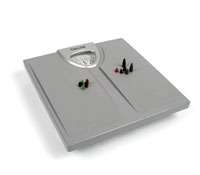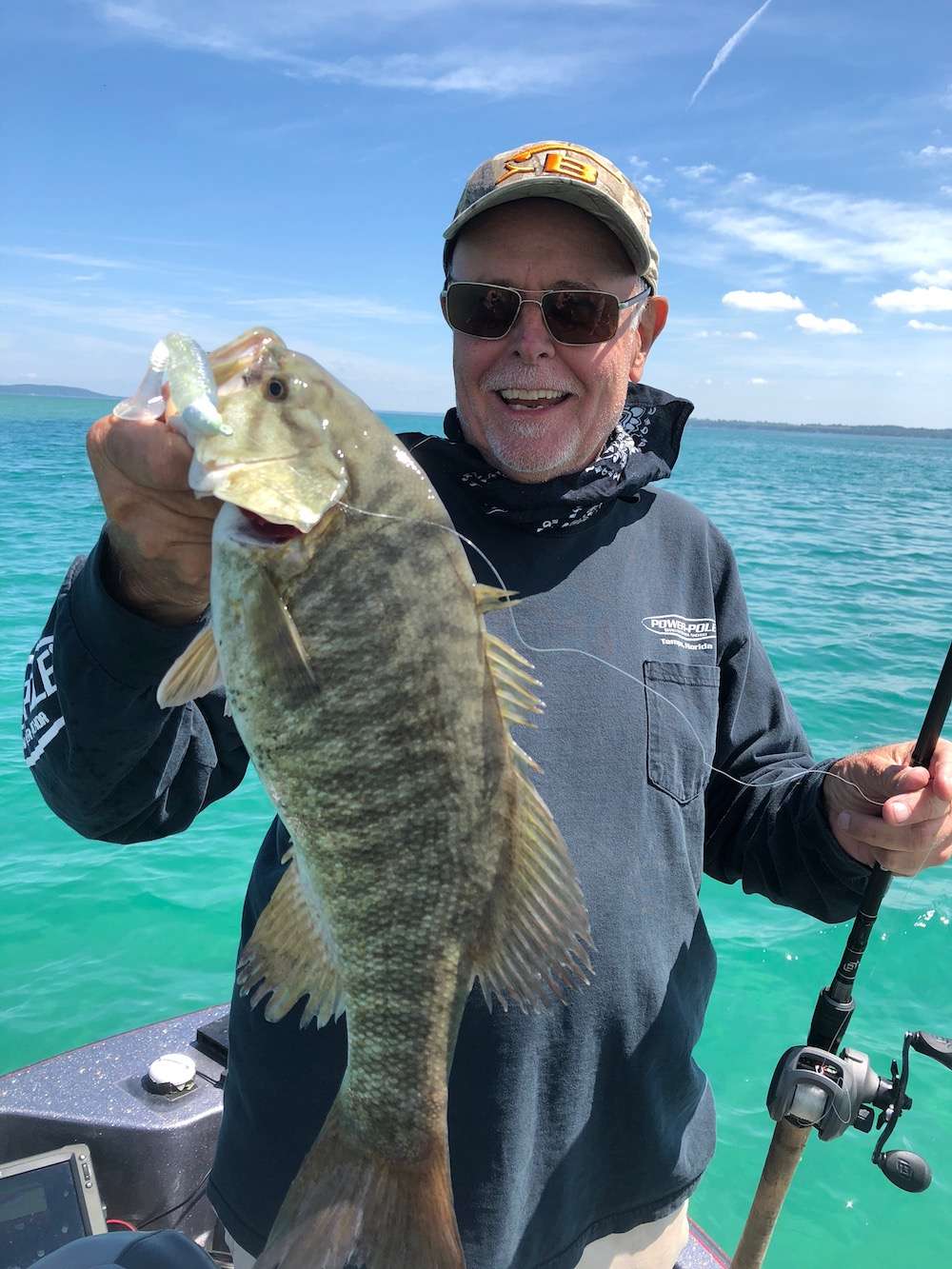
Are you a weight watcher? Never mind your waistline —I'm talking about the weight of the sinkers or jigheads you use. Do you find yourself changing weights frequently, or do you have a go-to weight that you're comfortable fishing with most of the time? Can you say for certain what weight you've got tied on right now?
As a longtime BASS correspondent, one glaring difference I've noted between the top pros and even the most highly skilled amateur anglers is the amount of time and energy that pros spend evaluating and changing sinker or jighead weights. If you find it hard to believe (as I once did) that there's a world of difference between, say, a 1/4-ounce worm sinker and a 3/16-ounce, I urge you to read the insights of 2007 Classic Champion Boyd Duckett. Once you do, I'm betting that you'll hit your nearest tackle shop to beef up your sinker and jighead selection.
FACTORS DETERMINING WEIGHT SELECTION
"The topic of weight selection is, to me, endlessly fascinating because it involves so many variables," Duckett told Bassmaster. "You've got to take into account the wind velocity, depth, water clarity, bottom composition, where bass are holding in the water column and how active the bite is, for starters. I'm absolutely positive that if I can determine the perfect sinker or jighead weight for the conditions at hand, I'll get more bites, catch more fish and cash a bigger paycheck."
Theoretically, the perfect presentation to make to a bass that's actively feeding is a weightless one, Duckett pointed out:
"The living prey that bass eat — crawfish, shiners, shad — don't have a weight strapped to them. They're free to swim or crawl around unencumbered in a lifelike manner." The tables turn, however, when you attempt to mimic live prey with an artificial lure: "Most weightless soft plastic baits either float, or sink too slowly, so you must add some weight to be able to cast and present them effectively. Your goal then becomes choosing the sinker or jighead that will make your presentation look as close as possible to live forage."
As a rule of thumb, the presentation that is most likely to elicit a strike usually involves the lightest possible amount of weight, Duckett emphasized. "There are exceptions to this, but in general, each increment of weight you add to your presentation will reduce the number of bites you get. I highly recommend that you start out using the least possible amount of weight, then go heavier only when absolutely necessary." When Duckett makes this statement at seminars, the usual response from someone in the audience is, "I use a heavy weight so I can feel my lure." His response: "Why are you so hung up on feeling your lure? All you really need to know is whether or not it's on the bottom, and you can tell that by watching your line. Worm and jig fishing is all about patience, and the anglers who excel with these lures all fish really slowly with light weights. A feeding bass will pick up a lure with a light weight and swim off with it, never even realizing it's there. The more weight you use, the more short strikes, dropped lures and blowouts you'll get."
Of course, bass often are in a negative or unresponsive mood, Duckett noted. "Cold fronts and angler pressure are the two most common factors that give bass lockjaw, and that's when weight selection really becomes critical." You'd think that using a superlight weight would always give you an edge when the bite is slow, but sometimes the opposite is true.
Case in point: the 2007 Classic, when Duckett used a super-heavy 1 1/2-ounce Tru-Tungsten worm sinker on his Berkley Chigger Craw to win over a half-million bucks. "I found bass holding in brushy cover with a grassy bottom, and made the decision to go for a total reaction bite instead of trying to coax the fish into biting with a light, slow, natural presentation," he explained. "I used the heavy sinker to get the lure through the limbs quickly and down to the bottom where the fish were holding. I'd flip it into the cover, then pop it repeatedly off the bottom. Each time that sinker clanked down, it kicked up a puff of silt and knocked grass blades around, provoking a reaction strike. The bass would suck it in out of sheer reflex, then blow it back immediately if they felt all that weight, so I had to hit 'em the instant I saw my line jump."
LEAD VS. TUNGSTEN
Let's get one thing straight from the get-go: Duckett, like several other top pros, is sponsored by a tungsten sinker manufacturer. "Am I prejudiced in favor of tungsten weights? You bet I am, and for good reason," he stated flatly. "Besides the widely publicized environmental concerns about lead (New Hampshire, Maine, New York, Vermont and Massachusetts have enacted legislation banning lead sinkers and jigs from all or specified waters), tungsten outperforms lead in every respect." Its most obvious advantage: Tungsten weights are smaller than lead. "When you're talking sinkers and heads, smaller, more subtle and less obtrusive is always better," Duckett said.
Consistency is another factor in tungsten's favor, Duckett continued. "Lead weights are notoriously inconsistent. I've seen lead sinkers labeled 1/8 ounce that were actually 1/4 ounce, and vice versa. This is a major problem when you're trying to use a precise presentation — half the time, you don't know how much weight you've really got tied on when you're using lead."
CAROLINA CONCERNS AND MIND GAMES
Carolina rigging is a much different style of presentation than either flipping a jig or target-casting a worm, Duckett says. "It's a horizontal presentation, more like crankbait or spinnerbait fishing than either worming or jigging, which are vertical. When Carolina rigging, you're searching for scattered bass that are often suspending close to the bottom and are not very aggressive." The traditional Carolina presentation involves a heavy sinker (usually 3/4 to 1 ounce), but here the Classic champ goes against the grain. "The book says that you want that heavy sinker dragging the bottom as a sort of attractor, kicking up silt and clicking across the rocks like a live crawfish scurrying about. Sorry, but I don't buy into this line of reasoning. When I'm Carolina rigging, I get a lot more bites and catch more fish with a lighter sinker, say 7/16 or 1/2 ounce. This is more of a stealth presentation — it's quieter and less visible, especially since I'm using a more compact tungsten weight. And, a lighter weight lets me fish chunk rock, brush and grass with fewer hang-ups."
OK, be straight with us: Is there really a discernable difference between a 7/16- and 1/2-ounce sinker, or a 1/8- or 3/16-ounce jighead? "To me, it's not just a confidence thing or some sort of mind game— I can really, truly feel the difference. This comes from years of fishing with different weights in every conceivable type of water condition." You can attain this level of feel by experimenting with a variety of weights on your home waters, the pro emphasized. "Go to the lake with one rod, such as a 7-foot worm rod with 14-pound mono, and fish a familiar lure like a 7-inch worm with a variety of sinkers, from the lightest you can possibly cast to heavier than you think you'd ever use. Start with the heaviest and gradually work your way down to the smallest in increments of 1/16 ounce. Believe me, with practice, you'll be able to tell the difference, too."
PAM MARTIN-WELLS ON WEIGHT SELECTION
After observing Women's Bassmaster Tour (WBT) pro Pam Martin-Wells firsthand, I was struck with her attention to detail where weight selection is concerned. Here are some of her insights on this weighty topic.
On lead vs. tungsten: "Tungsten hands down. You always hear about tungsten being more compact than lead, but it's also considerably harder, so it transmits vibrations up your line and through your rod more efficiently.
You'll definitely feel the bottom better with tungsten."
On painted vs. unpainted weights: "Painted! You'll get way more bites by treating your jighead or sinker as an integral part of your lure presentation, not as an add-on. Match the weight's color as closely as possible to the lure's color to keep the presentation discreet."
On Carolina weights: "There's no such thing as a universal Carolina weight. I like to use different shapes and styles of sinkers depending on the bottom condition, and I seldom go heavier than 1/2 ounce."





